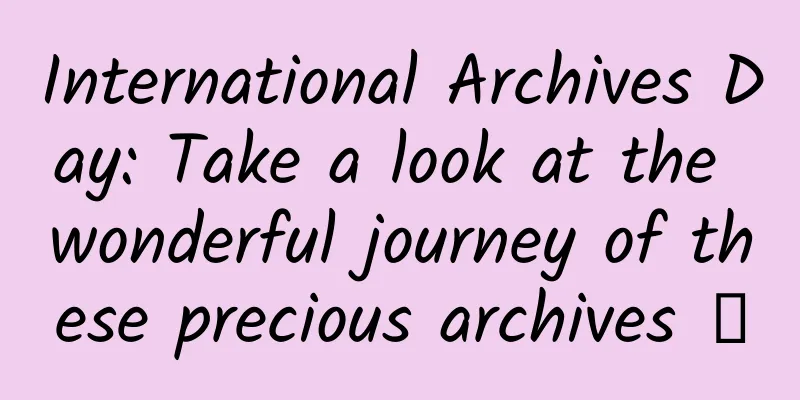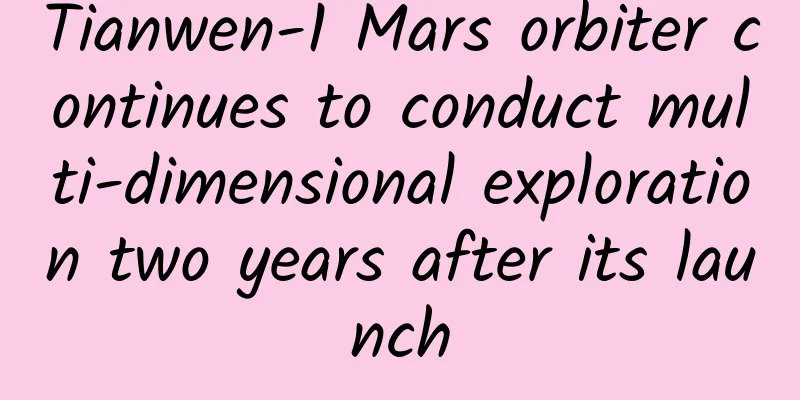International Archives Day: Take a look at the wonderful journey of these precious archives →

|
Archives connect the present and the past, and carry the memory of the sea changing into mulberry fields. How important are archives? Birth, medical treatment, schooling, job promotion and salary increase, marriage and childbirth, retirement... Whether it is life or work, archives are indispensable to each of us, as important as ID cards. But do you really understand it? Let's go into the archives and understand them! Recently, Hubei and Jiangsu provinces jointly signed a memorandum of understanding on the sharing, development and utilization of digital archives of Wuhan Yangtze River Bridge and Nanjing Yangtze River Bridge. On the same day, some precious bridge construction materials were released, covering the preliminary survey, planning and design, construction completion, etc. of the bridges, and many photos and base maps were released for the first time. Song Qian, archive specialist of China Railway Major Bridge Engineering Bureau, said that the construction schedule of Wuhan Yangtze River Bridge was announced to the public for the first time. The construction of the connecting line project began in 1953, and caisson tests and pipe pile experiments were carried out during this process. Image source: CCTV News Client According to the first published information, the Wuhan Yangtze River Bridge underwent various experiments for nearly two years before the official construction began. It was the rigorous and meticulous work of the construction team that made the smooth construction of the first bridge across the Yangtze River possible. Not long ago, two more Chinese documents and archives were included in the "Memory of the World Register". The five versions of the "Four Medical Classics" currently preserved in the Tibetan Hospital of the Tibet Autonomous Region are one of them. The Four Medical Classics is the founding work of Tibetan medicine. It is a book that combines theory with practice and comprehensively expounds Tibetan medicine. It covers 1,616 diseases and records 2,258 prescriptions. Tsering, director of the Tibetan Hospital of the Tibet Autonomous Region, said that the successful inclusion of the Four Medical Classics in the Memory of the World Register marks that Tibetan medicine has entered the international stage. The "Golden Manuscript" of the Four Medical Classics in the Tibetan Hospital of the Tibet Autonomous Region. Photo by Xinhua News Agency reporter Danzeng Nima Quzhu Yinba, a researcher and deputy director of the Tibetan Hospital of the Tibet Autonomous Region, said that the five versions of the Four Medical Classics selected into the Memory of the World List, namely the 1546 woodcut "Zhatang Edition", the 1640 woodcut "Dadan Edition", the 1662 woodcut "Ganden Pingcuolin Edition", the 1892 woodcut "Yaowangshan Edition" and the 1942 "Golden Manuscript", are proofread and finalized versions in different periods. In 2018, the Four Medical Classics were selected into the Memory of the World Asia-Pacific Region List. The Four Medical Canons were written between the 8th and 12th centuries and are the founding works of Tibetan medicine. Among the five versions of the Four Medical Classics selected for the Memory of the World Register, the Golden Manuscript is the first in Tibetan history to be written in gold, and is also the best-preserved rare edition of the Four Medical Classics. It is an artistic masterpiece that integrates papermaking, calligraphy, binding, and aesthetics. The document fully reflects the historical trajectory of the development of Tibetan medicine and has played an irreplaceable role in the dissemination and development of Tibetan medicine. Tips What is an archive? The Archives Law of the People's Republic of China defines archives as follows: "Archives as referred to in this Law refer to historical records in various forms, such as text, graphics, audio and video, that are directly generated by past and present state agencies, social organizations, and individuals engaged in political, economic, scientific, technological, cultural, religious, and other activities and that have preservation value for the state and society." Copyright image, no permission to reprint What is the origin of International Archives Day? From June 9 to 11, 1948, the United Nations Educational, Scientific and Cultural Organization (UNESCO) in Paris held an expert meeting. Archivists from many countries in the world attended the meeting and exchanged ideas. After discussion, they decided to establish the International Council on Archives (ICA). The first charter of ICA was passed at the meeting, which pointed out that archivists from all over the world should work together to protect archives, conduct appraisals and provide access "for all mankind"; archives and documents, as a shared heritage of the world, have the same identity as all mankind. In November 2007, to celebrate the 60th anniversary of the establishment of the International Council on Archives on June 9, 2008, all members of the International Council on Archives held their annual plenary meeting in Quebec, Canada and voted to designate June 9 of each year as International Archives Day. Why are archivists also called "Lantai people"? Lantai is passed down to later generations, reflecting the past and illuminating the future. Why do we often call archivists Lantai people? This starts with the archival management institutions specially set up in ancient times. The central institutions for keeping archives in different dynasties in my country have different names: Tianfu in Zhou Dynasty, Lantai, Dongguan, Shiqu in Han Dynasty, Shiguan in Tang Dynasty, Jiageku in Song Dynasty, Jiageku in Yuan Dynasty, Huangshicheng, Houhu Huangceku, Neigedaku, Dabentang, Gujintongjiku in Ming Dynasty, and Neigedaku in Qing Dynasty. It can be seen that Lantai was the place where books were stored in the palace of the Han Dynasty. It was the earliest official archive in my country, which was in charge of the Yushi Zhongcheng. Later dynasties called the Yushitai Lantai, and Sima Qian was one of the diligent archivists. Ban Gu, the historian of Lantai in the Eastern Han Dynasty, was ordered to write history, so later generations also called historians Lantai. During the reign of Emperor Gaozong of Tang Dynasty, the Secretariat was changed to Lantai. After thousands of years of evolution, the word "Lantai" has become a synonym for archive management institutions and archive work, and archivists are called "Lantai people." Comprehensive sources: Xinhua Viewpoint, CCTV News Client, National Archives Administration, etc. |
>>: My ankles ache slightly when it rains. Is this a disease?
Recommend
Private domain traffic cannot save the brand!
The concept of private domain traffic is said to ...
Can't do strenuous exercise? Retinal tears? People with high myopia should not ignore this checkup every year
Many people think The consequence of myopia is th...
Wangchuan Education-Interest E-commerce Team Self-broadcasting Growth Camp
Wangchuan Education-Interest E-commerce Team Self...
How much does it cost to create Sogou Encyclopedia? Are there any discounts?
Everyone knows that Sogou Encyclopedia is a platf...
Why is it said that Disney, which holds a powerful IP, lacks Internet thinking?
Shanghai Disney Theme Park officially opened on J...
Can diester oil help lose weight and lower blood lipids? Is it really that good?
gossip "Diester oil is better than ordinary ...
Hema Fresh-membership operation routine!
The reason for this article today is that I moved...
4 cases to teach you how to use TikTok to promote products!
With the disappearance of the Internet traffic di...
The difficult-to-detect "swimming" of microorganisms is actually the "new key" to exploring extraterrestrial life?
Author: Huang Xianghong Duan Yuechu In the vast u...
Collection | 7 secrets to using "Toutiao" to attract traffic. It will be too late if you don't do it now!
There are many self-media platforms today, and al...
Online event promotion, increased 100,000 users in seven days!
What kind of event can enable a beauty store to g...
AMD: By 2023, AMD CPU's share of the server market will exceed 25%
According to foreign media reports, chipmaker AMD...
Will the strongest gamma-ray burst reveal these supernova "explosive materials"?
"We are in awe and feel very lucky to be abl...
More than 60 tools for event operation and promotion, a must-have!
To organize a good event, it often goes through t...
Three-screen 4K: 11520×2160 for gaming
Jason Megit, who is responsible for A card testing...






![A Chinese team changes the world again! iOS9 can be jailbroken [Download]](/upload/images/67ebe2d9cb092.webp)


